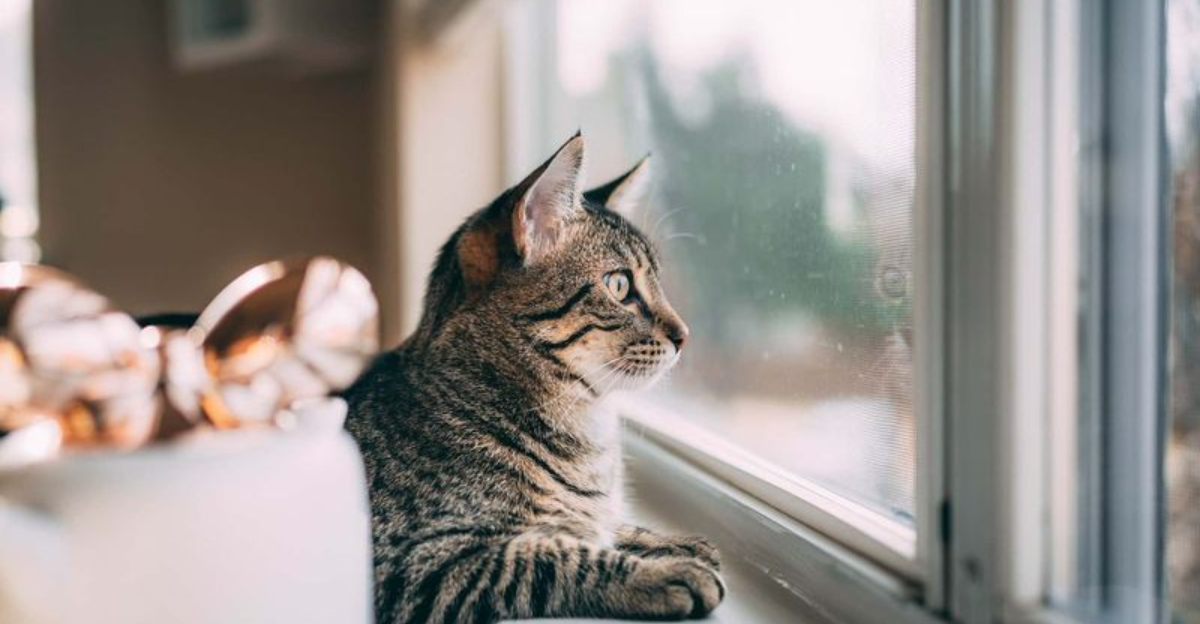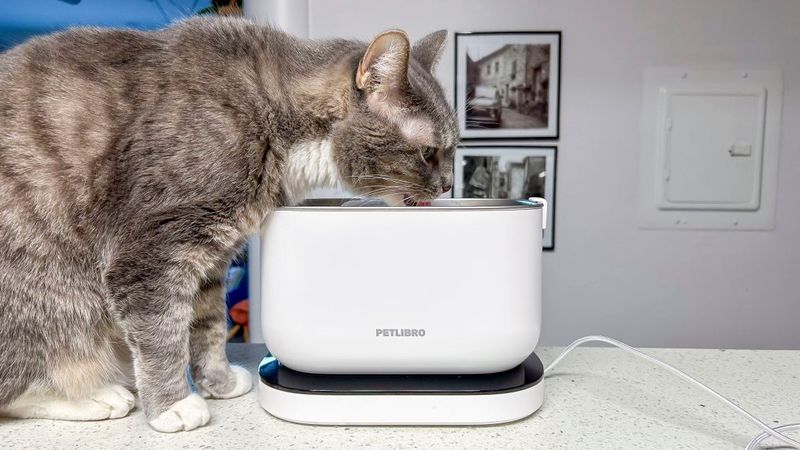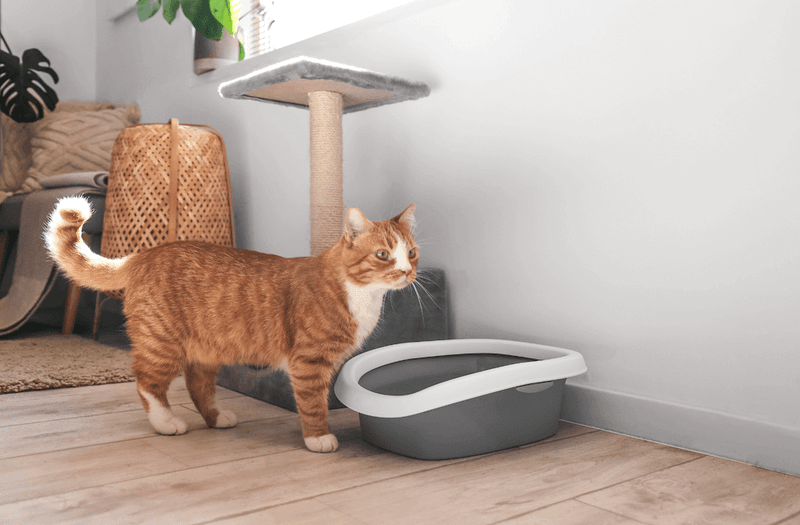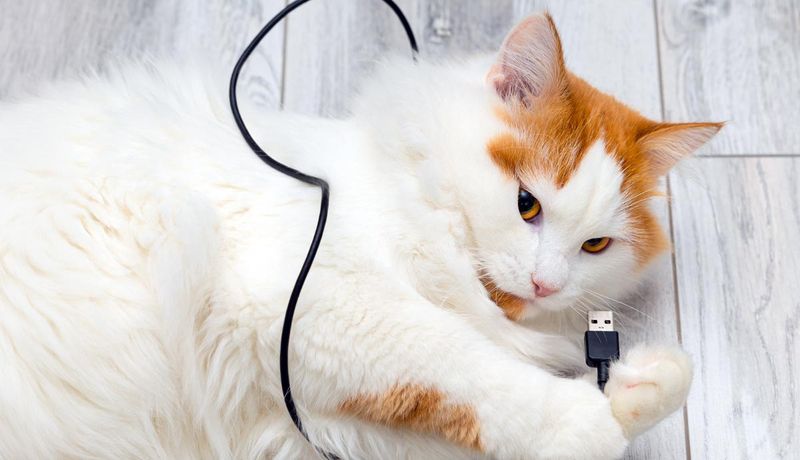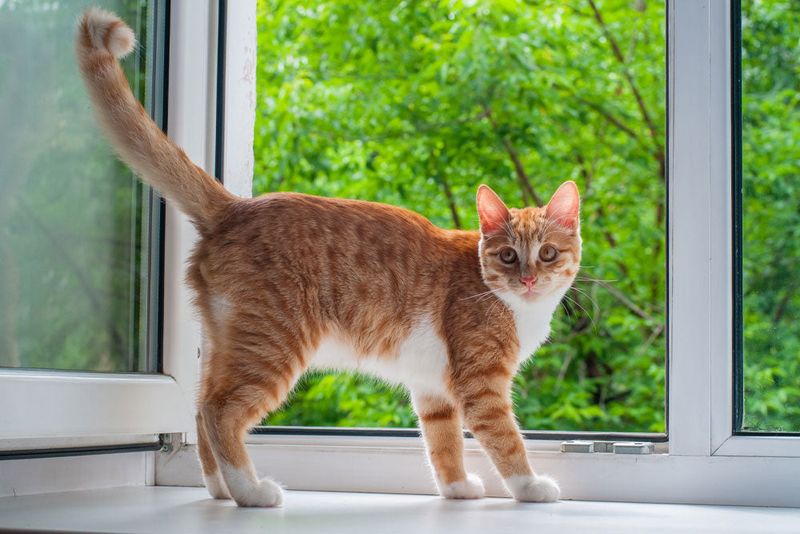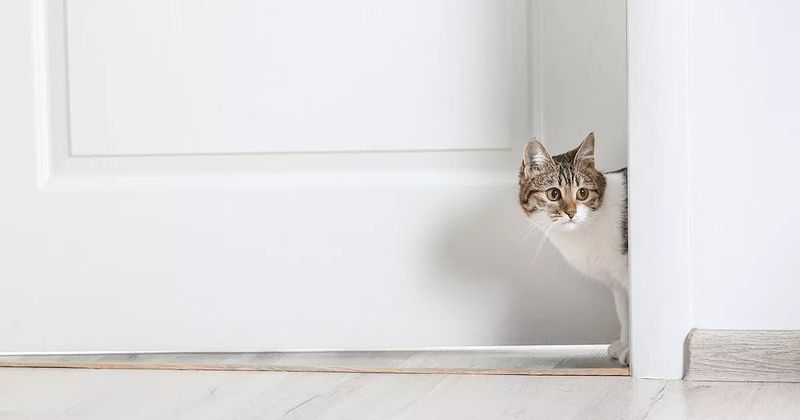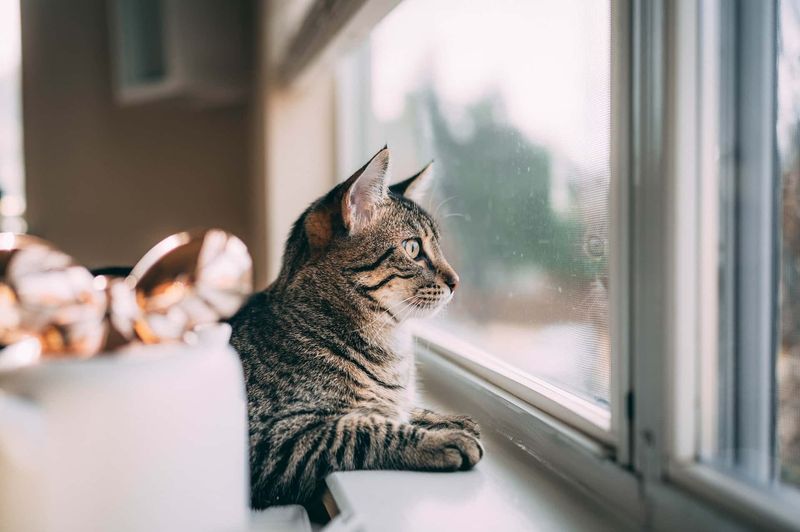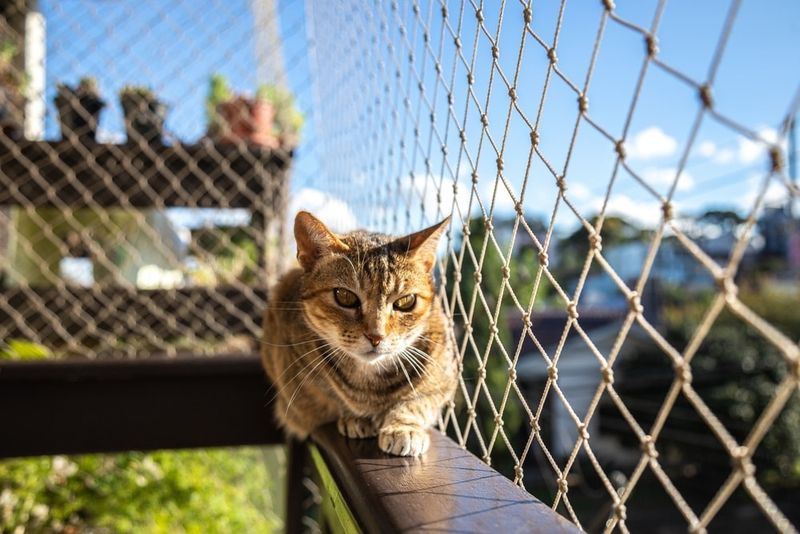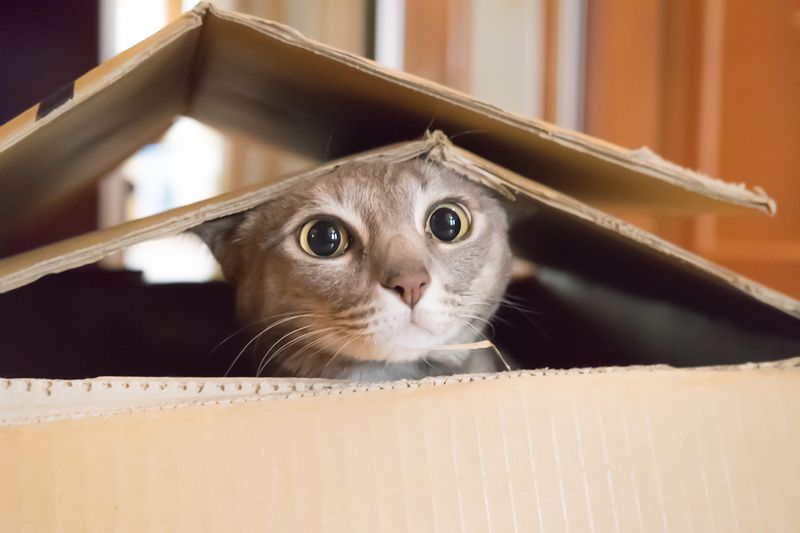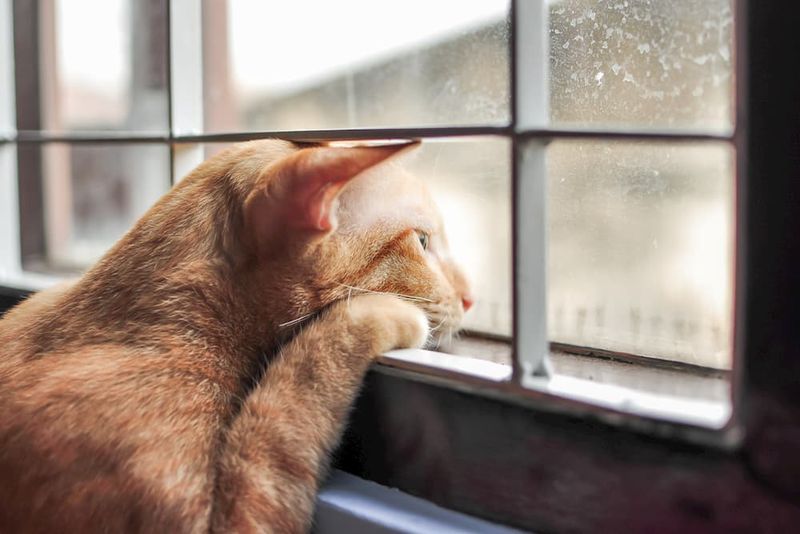📖 Table of Content:
- 1. Leave Food Bowls Empty
- 2. Forget Fresh Water
- 3. Block Access to Litter Boxes
- 4. Leave Dangerous Items Accessible
- 5. Skip Hiding Spots Check
- 6. Leave Windows Wide Open
- 7. Turn Off All Lights
- 8. Create Complete Silence
- 9. Neglect Entertainment Options
- 10. Forget to Secure Escape Routes
- 11. Leave Appliances Running
- 12. Skip Temperature Control
- 13. Dismiss Enrichment Activities
- 14. Forget to Check Weather Forecasts
Leaving a cat home alone calls for thoughtful preparation to ensure safety and comfort. Despite their reputation for independence, cats rely on routine and familiar surroundings. Disruptions or neglect can lead to anxiety or behavioral issues.
Some common mistakes can unintentionally create stressful situations for a cat left on its own. Lack of stimulation, inadequate food or water access, and unsafe environments are frequent concerns. These oversights are often preventable with simple adjustments.
Providing a secure, enriched space helps maintain a cat’s sense of stability during alone time. Planning ahead reduces risks and supports emotional well-being. With the right setup, time apart can be calm and uneventful for both pet and owner.
1. Leave Food Bowls Empty
Running out of food is a major stress trigger for cats. Always ensure your cat has enough dry food to last your entire absence, plus a little extra for unexpected delays. Many cats self-regulate their eating, but some don’t.
Automatic feeders work great for longer trips, dispensing measured amounts at scheduled times. These devices help maintain your cat’s routine even when you’re not there to fill the bowl.
For overnight trips, consider leaving out multiple food stations in different locations. This mimics hunting opportunities and provides backup if one bowl gets tipped over.
2. Forget Fresh Water
Cats need constant access to clean water. Dehydration happens quickly and can cause serious health problems, especially for cats with kidney issues. Multiple water bowls throughout your home create insurance against spills.
Water fountains encourage drinking and keep water oxygenated longer. Many cats prefer moving water and will drink more from a fountain than a still bowl.
During hot weather, consider adding ice cubes to water bowls before leaving. This helps keep the water cooler longer and gives your curious kitty something interesting to investigate.
3. Block Access to Litter Boxes
Closed doors or moved furniture can accidentally block your cat’s bathroom access. Always double-check that paths to litter boxes remain clear before heading out. Bathroom accidents aren’t just annoying – they signal distress in your cat.
The general rule is one litter box per cat, plus one extra. This becomes even more important when you’re away, as a blocked or full box needs alternatives.
For longer absences, consider larger boxes or automated self-cleaning options. Never place litter boxes in noisy areas like laundry rooms with running appliances, as cats may avoid them out of fear.
4. Leave Dangerous Items Accessible
When cats get bored, they go looking for something to do—and often find what they shouldn’t. Be sure to stash away things like medicine, cleaners, and tiny trinkets. Cats love to nibble and paw at things, which can lead to choking or worse.
Pay special attention to string-like items – dental floss, ribbons, yarn, and rubber bands. These seemingly innocent objects can cause intestinal blockages if swallowed, requiring emergency surgery.
Houseplants deserve careful consideration too. Many common varieties like lilies are highly toxic to cats. Either move plants to inaccessible areas or confirm they’re cat-safe before leaving your pet alone with them.
5. Skip Hiding Spots Check
Accidentally locking your cat in a closet, cabinet, or appliance creates a dangerous situation. Cats love exploring tight spaces and can slip inside when you’re not looking. Before leaving, count all cats and check their favorite hiding places.
Washing machines, dryers, and refrigerators require special attention. These appliances attract heat-seeking cats but can turn deadly if closed with a pet inside.
Outdoor access points need checking too. Ensure pet doors work properly and haven’t become stuck. For cats without outdoor access, verify all windows have secure screens to prevent escapes or falls.
6. Leave Windows Wide Open
Fully open windows pose serious risks, even for indoor cats. The excitement of birds or squirrels might tempt your cat to jump, resulting in injury or escape. Screens aren’t always secure enough to withstand a determined cat’s weight.
Temperature control becomes another concern with open windows. Weather can change dramatically while you’re away, leaving your cat vulnerable to extreme heat or cold.
A safer alternative is installing cat-proof window guards or using window stops that allow partial opening for ventilation. These modifications let fresh air in while keeping your curious cat safely inside your home.
7. Turn Off All Lights
Complete darkness disorients cats and increases anxiety. Unlike humans, cats don’t need pitch black to rest comfortably. Leaving a few lights on creates a more secure environment for your pet.
Strategic night lights in hallways, near litter boxes, and food areas help cats navigate confidently. Light timers offer an excellent solution, mimicking normal household patterns and deterring potential intruders simultaneously.
Natural light cycles matter to cats, affecting their internal clocks. During winter months with shorter daylight hours, additional lighting becomes even more important for maintaining your cat’s sense of routine and well-being.
8. Create Complete Silence
Sudden silence feels unnatural and stressful to cats accustomed to household sounds. The abrupt change from normal activity to complete quiet can trigger anxiety in sensitive felines.
Background noise provides comfort and masks potentially frightening outdoor sounds. A radio or TV left on at low volume creates a sense of companionship and familiarity.
Sound machines designed specifically for pets offer another solution. These devices play calming frequencies or simulate human presence through conversation-like patterns. Many cats find white noise particularly soothing, helping them relax despite your absence.
9. Neglect Entertainment Options
A bored cat can turn your living room into a playground. When they don’t have enough to do, plants, couches, and cords become irresistible toys. Keep things calm by giving them fun, cat-friendly outlets instead.
Window perches create natural entertainment zones where cats can safely watch outdoor activity. Position these near bird feeders for maximum feline fascination.
Puzzle feeders and treat-dispensing toys serve double duty – mental stimulation plus rewarding snacks. Rotate toys before each absence to maintain novelty. Some automated options like motion-activated laser toys can provide interactive play even when you’re not there.
10. Forget to Secure Escape Routes
Even indoor-only cats may attempt escape when left alone. Stress, curiosity, or the pursuit of prey can trigger unexpected flight attempts. Check doors, windows, and any potential exit points before leaving.
Pet doors require special attention if you have them. Many models offer lockable features designed specifically for times when you want to prevent outdoor access.
Consider your home’s entry points from a cat’s perspective. Loose vents, gaps under doors, or partially open windows might seem too small for escape to human eyes, but determined cats can squeeze through surprisingly tight spaces when motivated.
11. Leave Appliances Running
Unattended appliances create fire hazards and safety risks for curious cats. Dishwashers, washing machines, and dryers should complete their cycles before you leave. Cats may climb inside open appliances or chew on accessible cords.
Cooking appliances deserve special caution. Cats can accidentally activate touch-sensitive stoves by walking across control panels. Stove knob covers provide an inexpensive safety solution.
Unplugging smaller appliances like irons, curling wands, and space heaters eliminates both fire risks and cord-chewing temptations. For necessary devices like refrigerators, secure cords with protective covers designed to withstand curious teeth.
12. Skip Temperature Control
Cats struggle to regulate body temperature in extreme conditions. Without proper climate control, your home can quickly become dangerously hot or cold. Remember that comfortable temperatures for humans don’t always match feline needs.
During summer, set the air conditioning between 75-78°F to prevent overheating. Provide cool tile surfaces and shaded areas as natural cooling spots. Ensure fans are secured so curious cats can’t access moving blades.
Winter requires equally thoughtful preparation. Maintain indoor temperatures above 65°F, and consider providing heated beds for older cats or those with arthritis. Never rely on space heaters when you’re away, as they pose serious fire risks.
13. Dismiss Enrichment Activities
Mental stimulation prevents behavioral problems when cats spend time alone. Without appropriate outlets, boredom can manifest as excessive meowing, inappropriate scratching, or destructive behaviors. Environmental enrichment makes your absence less stressful.
Cardboard boxes arranged as tunnels and hideaways create engaging play spaces. Scratching posts positioned near sleeping areas allow natural stretching behavior upon waking. Window perches with bird feeders outside provide hours of entertainment.
Food puzzles extend eating time while challenging your cat’s problem-solving abilities. Simply hiding small portions of dry food around your home can transform mealtime into an engaging hunting game that occupies your cat throughout the day.
14. Forget to Check Weather Forecasts
Extreme weather events can impact your cat’s safety even indoors. Power outages from storms eliminate heating, cooling, and security systems. Always check forecasts before leaving your cat alone for extended periods.
During severe weather seasons, arrange backup care options with neighbors or friends who can check on your cat if conditions worsen. Leave detailed emergency contact information in an accessible location.
Consider how weather might affect your home environment. Heavy rain could cause leaks in areas where your cat sleeps, while strong winds might break windows. Position beds and litter boxes away from vulnerable areas and ensure your cat has multiple safe retreat options.
